
Vernacular Voices II: Ptolemaios, Phatres and Eirenais – Three Romano-Egyptians in Wadi Qash
Janet Robinson’s project Vernacular Voices is about ancient people living, travelling and most importantly communicating in writing in the Egyptian desert. Vernacular Voices I, published on Egyptological in May 2012 (http://egyptological.com/2012/05/31/vernacular-voices-8902), introduced a Romano-Egyptian called Phopis resting in a shady spot at Hans Winkler’s site RME21 (Robert Mond Expedition) in Wadi Qash. Vernacular Voices II discusses some hitherto unpublished graffiti signatures set in full sun at the celebrated ‘lost’ Hans Winkler rock-shelter RME18 which is also in Wadi Qash near the Roman garrisons of Krokodilo and Didymoi. [more…]
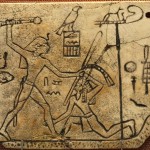
The Origin and Early Development of the Smiting Scene
The depiction of the king with mace raised above a helpless prisoner is one of the most prominent and enduring images of ancient Egypt. Although it has often been claimed that the origin for this iconic image lies in the Predynastic Era, this is unlikely. Not until the Narmer Palette do we see a possible model for dynastic developments of the image. These developments are traced here within the Early Dynastic Period [more…]
Solar Eclipse Events in the New Kingdom Part 2 – Astronomical Analysis
The sun played a central role in the religion and culture of Ancient Egypt. It is therefore surprising that there seems to be no unambiguous mention of solar eclipses in Ancient Egyptian texts. Eclipses would certainly have been experienced by the Ancient Egyptians and records of them would be expected to occur in the religious corpus. [more…]
Part 1 of this paper looked at the source texts and reliefs. Part 2 now sets out the astronomical background and predicts the solar eclipse events that would have occurred during the New Kingdom. These are then correlated with the New Kingdom texts and funerary material to test the hypothesis that these might record actual eclipse events. [more…]
Public Health in Ancient Egypt by Anthony J. Cagle
Abstract. Most studies of health and illness in ancient Egypt concentrate on disease and other maladies affecting individuals and the medical treatments administered to individuals. However, the concept of public health has received comparatively little attention, largely because the practice of public health has been seen as a fairly modern phenomenon tied to purely scientific notions of the sources and causes of illness and disease and their prevention. Nevertheless, even in the absence of a true germ theory of disease, the ancient Egyptians did possess an understanding of the social context in which many disease conditions occurred and took steps to prevent and alleviate certain conditions at a group level. From fairly basic public health practices, such as the removal of trash to peripheral locations, to reasonably sophisticated theories on the origin of disease and the widespread promulgation of preventive practices, ancient Egypt shows that even in pre-scientific complex societies an awareness of the social context of health and disease existed. Egypt and other ancient societies developed strategies to deal with health and wellness on a community and national level and thus are amenable to study using modern public health theory. [more…]
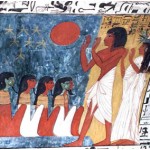
Solar Eclipse Events in the New Kingdom – Part 1: Texts and Funerary Material
This paper discusses a class of inscriptions appearing on eleven artefacts together with text and vignettes from five tombs and funerary material from Deir el-Medina, which may contain expressions made in response to eclipses. It is proposed that: [more…]
a) these artefacts record the witnessing of a deep solar eclipse; and [more…]
b) ill understood at the time, the eclipse was interpreted by witnesses as a form of punishment or omen and was consequently expressed in religious terms on stelae; protection against recurrences of the event was also included in tombs and on funerary furniture. [more…]
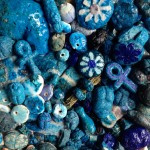
Brilliant Blue: A Practical Investigation of the Production of Ancient Egyptian Faience
Abstract. Ancient faience material found in large quantities throughout Egypt display a wide variety in the quality and intricacy of workmanship. Although evidence has shown that that there were temple and royal workshops the amount of pieces discovered in and around domestic dwellings suggest a thriving cottage industry existed. This paper investigates this possibility through experiments to recreate the traditional conditions and the processes used in the manufacture of faience. A wood fired kiln based on the traditional Ancient Egyptian bread oven was used with electric fired control pieces produced in order to trial recipes and develop an understanding the role of temperature in the nitrification process. The experimentation explored the processes of application, efflorescence and cementation and the techniques of moulding, bead making, inlay and stone glazing. [more…]
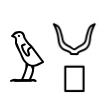
Notes on Legal Vocabulary (Old Kingdom and the First Intermediate Period)
In approaching the study of sAb, I raised the issue of the purport of this title and proposed a hypothesis for its translation (Vande Walle 2011) which differs from the usual notion of judge. In doing so, I collected some data on terminology concerning the act of judging and of the actors revolving around its implementation, which are the subject of this work. [more…]
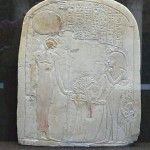
sAb Corpus
The sAb Corpus is a 300+ page compendium of the instances of the various forms of the use of the title sAb or “Justice” [more…]
 By
By